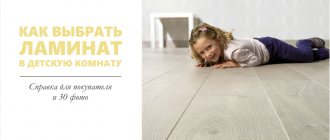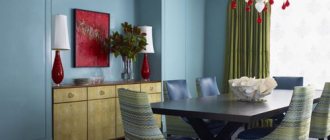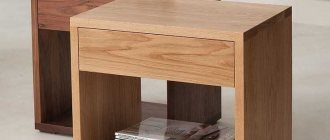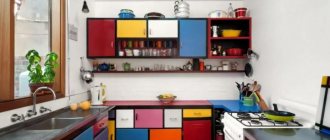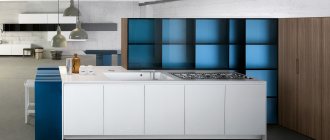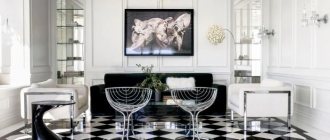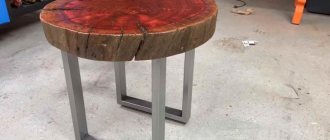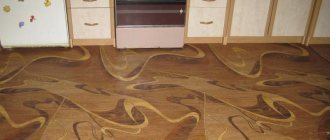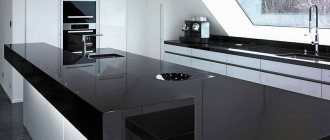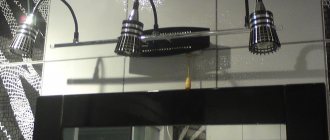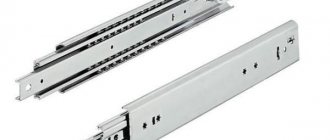What are kitchen furniture made of today? Is it realistic for it to “survive” until the middle of the 21st century and serve the next generations? What material should the kitchen be made of if you are going to rent out an apartment? Today we will discuss the material for making a kitchen - which one is better to choose in a given situation.
A typical mistake of a kitchen buyer: paying all attention to the facade, he resigns himself to the low quality of the frame. But the inner walls of the cabinets must firmly hold the hinges and fasteners, plus be resistant to moisture and steam. If the facade is the face of the kitchen, then the body is its body. Therefore, we will consider both.
“Casting” materials for the kitchen body
So, what material should you choose for your kitchen? Professional advice goes from budget options to the premium segment:
- Chipboard
- MDF
- Solid wood
Chipboard is the record holder for cheapness
In matters of economy and variety of finishing, chipboard has no equal. But, having saved a decent amount, be prepared for the disadvantages. The first disadvantage of this material for the kitchen is fragility. Chipboard does not accept a heavy tabletop, and you can’t count on strong fastening of the fittings either. And if the modular kitchen is disassembled, then during the next assembly you will have to drill new holes. Another argument against particle board is its tendency to dry out and swell from moisture. Considering that the kitchen is a constant splash and steam, the set exhausts its service life quite quickly - in 4-5 years.
This material is worth choosing if you:
- you don’t plan to live in an apartment for a long time;
- want to furnish a property intended for rent;
- you quickly get tired of the monotony and like to change your decor often, experimenting with “stone”, “wood” decor, etc.
When choosing furniture for the kitchen, be careful: sometimes chipboard emits formaldehydes that are hazardous to health. Ask to see a certificate with the emission class. If it is higher than E1, look for another manufacturer.
MDF - the “golden mean”
MDF is a similar manufacturing technology to chipboard, but less porous. This option is much more practical and durable. If the question arises which material is better to choose for the kitchen - chipboard or MDF, give preference to the latter. This option is indispensable in the following cases:
- Are you looking for good value for money?
- you want the kitchen to retain its beautiful appearance for a long time;
- The environmental friendliness of the material is important to you.
Plywood
Plywood is thin layers of wood glued together into one sheet. According to the type of surface treatment, it is divided into smooth, or polished and untreated. Plywood is sanded on one side, on both sides, or left unsanded. Unpolished is used in interior decoration. Polished types are needed for the manufacture of cabinet and upholstered furniture.
Depending on the appearance, plywood is divided into grades:
- The highest grade sheet has an even pattern without knots, microcracks or darkening.
- In first-grade plywood, minor darkening and isolated small knots are allowed.
- For the second grade, it is possible to have no more than five knots with a diameter of up to one and a half cm per 1 sq.m.
- Third-grade plywood, in addition to knots and darkening, has scratches, dents and minor chips along the edges of the sheet.
High-quality furniture is made from premium and first grade plywood, sanded on both sides. When painting with enamel, it is preferable to choose sheets without cracks or dents with an ideal wood pattern. It is recommended to apply paint or varnish to dry material. Before painting, it is advisable to treat the surface with a primer, which will fill the pores in the wood.
Plywood has the following positive qualities:
environmental friendliness;- ease of processing;
- variety of sizes;
- low price, light weight;
- possibility of painting and cladding;
- bending strength;
- ease of maintenance and restoration.
You can use plywood to create cabinet furniture elements: shelving, bookcases, drawer bodies, wall shelves. Plywood is not suitable for large and solid products. Its ability to bend due to changes in humidity and temperature limits its applications in furniture production.
The material also has its disadvantages. Like natural wood, plywood absorbs and retains moisture. Over time it bends and changes shape. Without additional surface treatment it has a short service life.
Kitchen front materials
Now let's talk about furniture facades. Today they can be finished:
- PVC film. It is economical, UV resistant and quite durable. But if you still damage the surface during cleaning, it will not be possible to restore it. And with prolonged exposure to steam, the film may peel off.
- Enamel. This option is more expensive than film, but easier to maintain. Choose light-colored material - fingerprints are less visible on it.
- Veneer coated with matte or glossy varnish. With such facades, the kitchen will immediately take on an aristocratic look. The effect will be long-lasting, because veneer is durable. You will have to fork out more money for this material, but you will be making a long-term investment. Even if you damage the surface of the facade, you can easily restore it with light sanding.
- HPL plastic. The material is strong and durable, has a glossy effect. But this also leads to a minus: noticeable “fingers” and the need to frequently wipe the facades.
Timber is an investment in the future
What material is better to make a kitchen from if the budget is not limited? Of course, from solid wood. It has no analogues in terms of strength and solidity. The appearance of wooden products is unique - over the years they begin to look even more elegant. “This house is a full bowl” – that’s what solid wood furniture conveys.
What material is better to choose for the kitchen? Professionals advise choosing oak, beech or ash wood. This durable wood can withstand intensive use for decades. Get ready to shell out some money: an oak or beech set costs a lot. A more economical option is pine wood. But since pine is a soft material, furniture made from it requires careful handling. Using abrasives or scrubbing too hard may leave scratches.
Will the wood deteriorate in such a “wet” area as the kitchen? Don’t worry: modern processing reliably protects the wood from getting wet, mold and wood pests.
These are the pros and cons of wooden furniture. A solid wood set is your option if:
- you prefer to make repairs once for many years;
- you want to create a respectable interior;
- you put eco-technologies and natural materials first.
Solid wood kitchens are made to order within a few weeks. The final touch is coating the facades with varnish, enamel or patina. Elegant gilding, noble silver plating, artificial aging - each option looks impressive in its own way.
Decorative coating
Having decided what cabinet furniture is made of, you can start decorating. The surface of wood boards of all types looks unpresentable. The decorative top layer not only gives the raw material the desired design, but also protects it from negative external influences. There are 6 coating technologies.
Laminating
Durable textured paper is fixed on the surface of the slab, which is varnished on top or processed using the embossing method. The method is used to create models in the inexpensive segment. The top layer will not withstand intensive use in aggressive conditions, so the structures quickly lose their attractiveness.
Melamine coating
Due to its strength, the material is also called artificial veneer. The edge is made from decorative paper, which is impregnated with resin. The method is used when finishing the internal surfaces of furniture and parts. After processing, the raw material increases its resistance to moisture and temperature. The technology is appropriate when creating wear-resistant facades for kitchens and countertops.
Decorative paper Source russian.alibaba.com
Lamination
The wood board is hidden under a durable film. The coating is made of a thermosetting thin polymer that is resistant to moisture and mechanical damage. The top layer can be smooth and textured. The protection method is used for any home furniture.
Postforming
When heated, paper plastic becomes very flexible. The material can be easily bent over the ends of interior items, tightly fixing it to the surface. After cooling, the raw material hardens, maintaining its desired shape. The technology is used in the processing of countertops and facades.
Beautiful coating Source yandex.ru
Softforming
The ends of the furniture parts are milled and then protected with plastic film. The method is suitable for the production of wardrobes and tables. The material is inferior in strength to lamination and postforming. During the procedure, it is not possible to completely mask the joints on the edges
Methods for decorating slabs Source bramek.ru
Veneering
A thin sheet of natural wood is glued to the surface of the slab. Veneer 3 mm thick is created on a special peeling machine. The material completely repeats the natural pattern of the raw materials from which it is made. The coating additionally increases strength and resistance to mechanical damage.
Decoration technology Source shpon.od.ua
Let's sum it up
Today we answered the question of which material for the kitchen is better to choose, based on common sense and our own preferences. And finally, a few more pro tips on how to choose the right kitchen furniture:
- do not combine cheap materials with expensive ones in the same kitchen. An elite stone countertop laid on chipboard furniture looks ridiculous;
- even if you choose an economy class kitchen, buy it from a trusted company. The same chipboard made in a homemade way will, over time, begin to release toxic substances and harm your health. Always inquire about the factory’s reputation and material quality certificate;
- If you are not a fan of frequent cleaning, choose matte surfaces - water stains and hand marks are not so noticeable on them.
Let the process of choosing a kitchen be pleasant and the result successful!
Return to list of tips
Wood
Natural wood is the most environmentally friendly material. Conifers such as pine and spruce are inexpensive, but release resins in a warm room. Oak, beech, cherry, ash, cherry have a strong fiber structure and are widely used in furniture production. For countertops, you need solid wood: glued together pieces of wood with a uniform pattern. The gluing areas are usually immediately visible.
Each batch of wood absorbs paint differently. Let's imagine you bought wooden chairs painted a certain color. After some time, we decided to buy 2 more chairs from the same manufacturer. Be prepared that the chairs will differ in color.
Furniture made entirely of wood is an expensive luxury. Therefore, to reduce the cost, the cabinet body is assembled from laminated chipboard, and only the facades, headboards, and individual elements with figured carvings and ornaments are made from wood.
Dining sets woven from rattan, willow or wicker have become popular and add graceful lightness to the setting. They look original and aristocratic.
Wood is a natural material, easy to process, decorated with carvings, painted and varnished. If handled carefully, wooden furniture will last for many years.
Fiberboard
Fiberboard, also called hardboard, is obtained by pressing a mixture of wood fibers, water and synthetic additives. The material is not of very high quality and strength. The main use of fiberboard is in the manufacture of back covers of cabinet furniture, drawer bases, etc. By analogy with laminated chipboard, a laminate film can be applied.
Glass
A fairly fragile material that is used with caution for individual furniture elements. To increase strength, glass is tempered. Tempered glass can withstand high mechanical and weight loads. The most common use of glass is as table tops for dining tables and coffee tables, fronts of cabinets and display cases, decorative shelves and whatnots.
If there are children or large animals in the house, then buying glass furniture is not recommended. Even tempered glass is still glass that can be broken.
The number of furniture materials is growing. New modern materials are constantly being added. Stone veneer has already appeared, used for cladding not only walls, but also furniture facades. With all the variety of materials, it is necessary to select furniture that is suitable in appearance, color, and technological parameters for each room in the house. It is especially important to find a manufacturer who uses high-quality materials to make furniture.
Veneer
Veneer is a thin cut of wood less than 1 mm thick. Veneer is glued onto MDF and used as a façade or decorative material. The material is environmentally friendly, does not differ in appearance from wood, although it is cheaper in cost.
Veneered countertops for dining and office tables are cheaper than solid wood. They are strengthened by several layers of varnish. Inlaid expensive countertop options are also made from veneer.
Metal
The use of metal parts in the manufacture of furniture enhances its design. Metal frames of cabinets, tables, chairs, and shelving help extend the service life of the product. Metal profiles are needed for sliding doors, finishing countertops, and facades of kitchen cabinets. Aluminum pipes of different diameters and shapes are used as legs of tables, chairs, bar counters, and furniture supports.
Metal shelves, pull-out baskets, trouser racks, tie racks, shoe racks are needed to fill wardrobes and equip dressing rooms. Metal bottle holders, containers, baskets, and drawers are used to fill kitchen cabinets.
Metal pieces of furniture are sometimes required for interior design in loft and hi-tech styles. Classic design can use furniture with forged elements: coffee and coffee tables, consoles, open shelves and racks.
Polymer furniture
Plastic molded furniture made from polymer components tolerates high humidity well and is convenient for use as outdoor furniture: garden sets, beach loungers, tables and chairs for cafes and restaurants.
Characteristics of plastic furniture:
- Variety of colors and models.
- Easy to care for.
- A light weight.
- Affordable price.
- Safety of use.
Expert opinion
Korzhavin Daniil Dmitrievich
Designer of stylish home furniture
Often plastic furniture is also purchased for indoor use. Dining groups, bar stools, coffee tables, armchairs, sofas, banquettes made of plastic fit into various interiors.
